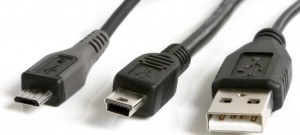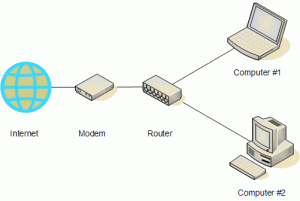If it seems that computer geeks speak a different language, well, they do. Computers and the Internet are no different from many other areas of our lives. From the cars we drive to the food we eat, everything has its own set of terms. Brakes pads and complex carbohydrates are just as confusing to some people as the various computers terms and acronyms that we run into on a daily or weekly basis. Let’s take a look at some of these terms. By the time we’re through, you’ll hopefully feel a bit more comfortable around the machines you use everyday. Let’s go!
1. LED – Light emitting diode, something that doesn’t take a lot of electricity to make light. Most new computer display screens and HD-TVs have LED screens. They are cool, literally, and use much less power. The benefit? An LED screen on a laptop translates to much better battery life.

2. Codec – basically a translator. If you speak English normally but are learning Mandarin, your brain uses a codec to change the English words into Mandarin words. The VLC media player can play any video on your computer, provided that you have the correct codec installed. These days, you don’t hear that term too often since video and audio files are somewhat more organized than they were in the past but if you can’t play a video, you will know that you need the correct codec (translator) to play it.
3. File format – every file has its own three letter designation, remnants of the old DOS OS, that lets your computer identify it in order to know what what program to use on it. An ‘mp3’ is both a music file and a file format, just as an AVI is. Some formats have become nouns that we use every day, just as we say Kleenex when we mean tissue. These formats include: .exe, .dll, mp4, .aac, .jpg, .gif, .zip. .rar, and so on. We will do a separate post on the main formats that you need to know. We’ll also show you how to tell which format a file is. It’s easy, actually.
4. USB – Universal Serial Bus is a way to get things from one device to another, usually something external, such as a cell phone or a hard drive, to a computer (laptop or desktop). Yes, we know it’s not really universal, right? One end of a USB cable is almost always the kind that fits into your computer but the other end might have a completely different connector. Then again, the one that comes with your cellphone doesn’t fit your camera and it doesn’t fit your MP3 player. Here’s a tip for you: Use masking tape to identify each cable as soon as you get it. Mark what device it’s for and you’ll always be able to find it.

5. SCSI – this is a term you don’t hear very often at all these days. If you do, it means Small Computer Systems Interface. The only thing that you have to know about SCSI is how to say it (scuzzi) and that devices that use it are very fast. The fastest hard drives are SCSI drives, or at least they were until…
6. SSD – drives showed up. SSD means solid state drive, essentially a flash drive. There are no moving parts to a flash drive, that’s why you can knock them, drop them, drive over them with a Hummer and they will still work just fine. An SSD is a much larger capacity flash drive, one that fits into a laptop or desktop and replaces your old ‘spinning platter’ hard drive. SSDs are very fast, quiet and don’t use much electricity. They can also fail without notice so don’t depend on them as a backup device. You’ll regret it.
7. Boot – start. When you start your car, you are actually booting it, even though you don’t call it that. We boot computers and reboot them when we want to shut them down and start them up again. When something happens ‘on booting’, that means it happens as the computer is starting. Boot menu, boot screen, reboot (remember the TV show?), boot up; these are all variations of the same word.
8. OS – operating system. Windows is an OS. So are Android, iOS, and Linux. There are remnants of Unix in both iOS and Linux. Windows still has some remnants of DOS in it. The Internet, for the most part, runs on Unix. The operating system lets you interact with your computer, controlling the machine by harnessing your input and translating it into a form that the device can understand. Each OS has its good points and bad points. Unix, it seems, is the most problem free but it does not have a GUI, relying on a command-line interface (CLI) instead.
9. GUI – Graphical User Interface, pronounced gooey, is what you use to interact with your computer, your cellphone, your HD-TV, your MP3/video player and so on. It’s the screen in front of you. Cars now have GUIs. Some refrigerators have GUIs. Again, a GUI is a translator. It takes something and makes it into something else, something you can see and, hopefully, understand faster. It also takes what you do, typing for instance, and translates it back into a form that your computer will understand. The symbol on a public wash-room door that designates it as women’s or men’s is, essentially, a GUI.
10. Modem/Router – the word modem is almost an anachronism these days but we still use it. It means ‘modulate demodulate’, actually, and is based on the older devices that changed your computer’s signals into bits of information that could be sent over a telephone line, then reversed when they got there. Think of a modem as the transporter on the original Star Trek episodes. Modern modems are silent, much faster and can be used on DSL Internet connections or cable Internet connections, although each is separate technology. A router uses wireless (WiFi) or wired (Ethernet) connections to distribute access to a modem across a network. Some devices are both modems and routers in one. The modem provides that pipeline while the router routes that pipeline to several computers.

Well, that’s ten terms or acronyms to start with. We tried to keep this short and non-technical, hoping to educate not bore you. If you can’t understand some concept, let us know. We’ll try to demystify anything that confuses you, whether it’s hardware or software or some arcane Internet term you’ve read.
Thanks for reading! Here’s the link to our Facebook page. Computers Made Simple on Facebook
